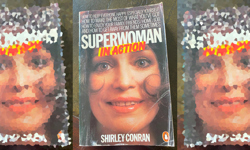What do you do when a magazine or newsletter stops working? Perhaps in the old days there was no option but to close it down or merge it with another product. Now, though, in our gleaming digital world, the very cause of the demise of print could also be its saviour – as we prepare to wave goodbye to the ink-on-dead-trees model and move head-first into web-first.
Far from spelling doom for the publishing industry, the move online represents a fantastic opportunity, albeit one that is causing a great gnashing of teeth in publishing houses across the world. Publications are moving online at a rapid pace, and any publisher who is not at least making plans to go digital now is going to end up in a dinosaur-like predicament.
I have been involved in the migration of two products online, and believe the key is in re-imagining your publication and freeing yourself from the shackles of paper and ink. The question every publisher needs to ask is, “What would this product be if we started it today?” I bet you it wouldn’t be an 8-page PDF that happens to look exactly like a newsletter, or one of those on-screen magazines where you use your mouse to turn the page. There is little point simply trying to replicate online what you did in print.
1. Case study: MyChild
One of the products I have worked on is a good case study. At the end of 2008, my colleagues and I at Electric Word, the specialist education and sports publisher, had to make a tough decision about one of our consumer titles. MyChild was a magazine for parents, sold mostly through subscriptions. This magazine contained articles and features telling parents how to help their children do better at school. We had a successful telesales operation bringing in decent amounts of revenue – but the magazine was losing money because of the high costs of producing, marketing and fulfilling it.
In the meantime, we had started to market the magazine online, using Google Adwords to generate leads, and we had just launched a website. The Adwords campaigns had taken off in a big way, bringing hundreds of leads every day. The key to the success of these campaigns was that we discovered a huge demand among parents for printable resources, for example practice SATs papers, English and maths worksheets and activity sheets for children. By offering these resources for free in exchange for an email address and phone number, we were able to build a large database.
More importantly, when it came to thinking about the future of the publication, we had identified something that our audience really wanted in the form of the printable downloads.
So we set about closing down the magazine and creating a new product. We still retained the core of the old product, in the form of articles giving advice, but the new focus was on creating downloads so that our subscribers were no longer receiving a periodical publication, but were instead paying for access to a resource bank where they could search for and download resources as and when they needed them. These downloads are organised by subject and age group, and collected together into packs, mainly for marketing purposes.
The existing subscribers were informed that they would no longer be receiving the magazine and would instead have access to this new resource. We sent them all user names and passwords, and the cancellation rate was very low, as were the complaints. Many customers found the new product more valuable than the one they had originally signed up for. More importantly, we now had a new product to market to an audience that wanted it. The lead generation channel and the product supported each other perfectly and after some marketing testing and experimentation, along with lots of work on SEO to build the organic traffic, we became very successful at bringing in and retaining new customers.
The costs of running the new online-only MyChild are far lower than the costs of producing the magazine. There are no print or distribution costs; we don’t need as many people to produce it; content costs are lower. In the first year as a digital product, MyChild went from being a loss-making product to a profitable one. We have freed ourselves from periodisation too. Content is added as it is needed or produced rather than being unleashed at monthly intervals. And we are able to use Google Analytics to track what content our subscribers are using which means we know what they want rather than having to guess. The old magazine contained a mix of parenting information, centred around education but also health, behaviour, safety and so on, but we now know that our readers use us mostly for education help. Because of this knowledge, we know exactly where to focus; we are even rebranding the product and have changed MyChild to The School Run as this more accurately reflects what we do.
The downside of all this is that it has been harder than we anticipated to move advertising revenues online; most of our advertisers still preferred the magazine format, or the combination of print and online. But we are making progress here and as traffic continues to grow we hope that advertising will become a significant revenue stream – although subscriptions revenue is growing rapidly as we bring on more and more members and is likely to remain more important than advertising revenue for the foreseeable future.
2. Case study: Peak Performance
A less smooth example of migration to digital from within Electric Word is that of Peak Performance which has existed as a paper newsletter for twenty years. Peak Performance is aimed at athletes and coaches, telling them how to train and perform better. Back in 2002, we started to sell it online and created a digital version – although nobody called it that back then – which, you guessed it, took the form of a PDF of the newsletter sitting behind a paywall, along with a selection of other PDF version of special reports we had originally created offline.
This continued for a few years, successfully bringing in lots of subscribers from around the world (around 60% of our customers are now from outside the UK) until we decided in 2007 that the lone PDF was not good enough. We set about rebuilding our subscribers area, adding dozens of videos and exclusive content such as interviews and lighter features that would not fit into the newsletter.
To our great shock and horror, none of our subscribers were as excited as us by this new content, and they continued to read the PDF predominantly, bypassing the great new videos that we had spent a lot of money producing. Retention rates remained unchanged, and even our new subscribers went straight to the PDF; plus we found it difficult to sell new subscriptions when we used the video content as the hook.
Perhaps our users weren’t ready for video. Perhaps they just didn’t find the format useful for the kind of information they look to us to provide. After trying for a year to stimulate interest in this new content, we stopped producing new videos and thought about what we could do next.
We took the blindingly obvious step of conducting a survey, but more importantly we were able to look at our web stats to see what free content people were using on our website (most of our content is free to access; we then upsell a subscription to the premium area). It became clear that what people really valued (of the stuff we already produced) were bite-sized workouts and training plans that they could print out and take to the gym or training ground. So we created lots more of these and added them to the subscribers’ area. For the first time since going online, we had found a type of content that was more popular than the newsletter itself.
The great advantage of this is that it gives us the confidence to push ahead to the next phase, which is to untie ourselves from the print product and gain the freedom to transform the product into something that takes advantage of new technology and will have wider appeal, particularly to the younger readers who we need to bring in to keep the title growing. It will also mean that it will be easier to stop producing the print newsletter at the point where it becomes sensible to do so.
MyChild and Peak Performance have completely or partially moved away from paper to digital, although for both I feel like we are only at the very beginning of the journey. Change is rapid and the scale of change needed can be daunting – but it is also very exciting.
Here are five things to think about when you are moving online. Although tip No.1 should be, “If you aren’t doing it already, you’d better have a really good reason.”
5 Tips for Migrating Online
1. Free yourself from the limitations of the paper format and imagine what your product would look like if it didn’t already exist.
2. Use your web analytics to find out what types of content your users really want.
3. Make sure the format of the content suits the demographics of the audience – but remember, everyone is moving online.
4. If you do a survey, your oldest most loyal subscribers will tell you they love the print version – don’t be afraid to upset some of the oldies to grow your audience...
5. But don’t stop publishing in print until it stops making economic sense to do so.










